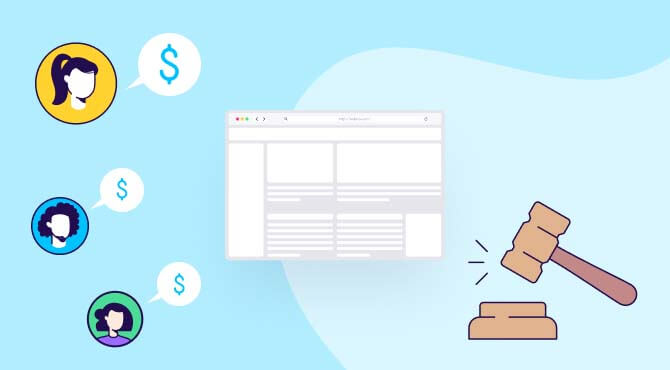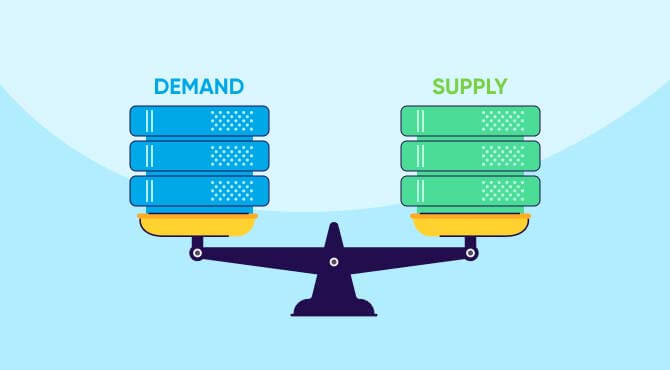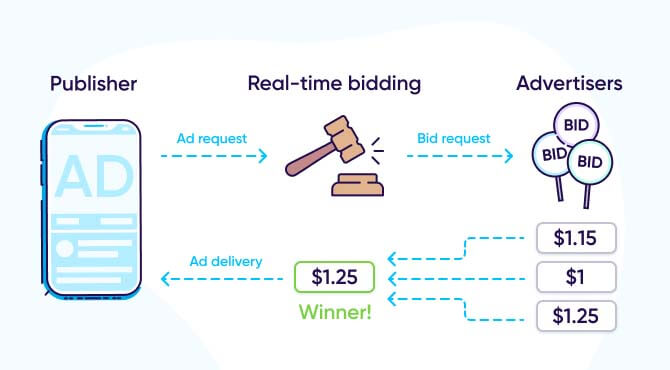
OpenRTB

OpenRTB is the technology that facilitates real-time bidding (RTB). RTB is the buying and selling of ad impressions via instantaneous programmatic auction.
What is OpenRTB?
Many of the video and display ads you see online result from companies using real-time bidding (RTB) to display their ad to you. RTB — which happens in less than a second — is an integral part of programmatic advertising, an industry that’s expected to surpass $200 billion in the US in the near future.
OpenRTB standards supply the protocol for RTB transactions. They include consistent, standardized ways to provide essential information about an ad impression. For example, through OpenRTB, marketers can see publisher information, the sizes and standards for the ad creative, and other information needed before bidding.
The purpose of OpenRTB is to encourage growth in RTB marketplaces by supplying an open industry standard for interoperability and communication between buyers and sellers of digital advertising. It’s been around since 2010, when a large group of demand-side platform and supply-side platform (SSP) came together to create the open-source protocol for OpenRTB.
Supply-side platform (SSP) vs. demand-side platform (DSP)

Publishers use SSPs to package and sell their programmatic ad inventory to marketers, while marketers use DSPs to purchase programmatic ad inventory. DSP platforms help marketers target ads, manage ad creatives, and report on delivery.
SSPs and DSPs communicate via OpenRTB, providing their specification details via bid requests and responses.
The SSP issues a bid request, and the DSP replies with a bid (the bid response). Both the request and response are conveyed in JSON (Javascript Object Notation), a lightweight format for transmitting data. Using JSON, bid requests and responses provide attributes, objects, and necessary values for buying and selling ad impressions.
First-price auction vs. second-price auction
In a first-price auction, the publisher takes the highest price, and that’s what the marketer pays. In a second-price auction, the publisher takes the highest bid, then lowers it to the second-highest bid or a penny above it. This is the price the marketer pays.
For example, let’s say there’s a second-price auction with one bid at $7 and another at $8. The marketer who placed the $8 bid will win, but they’ll only have to pay $7.01.
Once a marketer has won an SSP auction, what happens next? First, the SSP takes the ad information from the marketer and sends it to the publisher. Usually, the SSP adds in extra tracking so it can independently track events that occur with the ad.
After the ad has been served on the publisher’s property and the various tracking beacons show that the ad has been served, the transaction is complete. Both the SSP and DSP record the transaction and price.
RTB capabilities

RTB refers to using demand-side platforms to automatically bid in real-time for ad impressions. Here are some of the main benefits of RTB:
- It lets publishers and marketers segment and optimize their audiences in real time.
- It allows marketers to continuously optimize their campaigns using data like page content, time of day, ad placement, visitor data, and more.
- It lets marketers quickly tap into global inventory in real time to reach large market segments, even across multiple countries. Marketers can also serve ads to individual high-value users. And you can do all of this without needing direct contact with media sellers and their platforms, saving you time.
- It helps marketers personalize ads. Because of the data and scalability that come with RTB, marketers can serve personalized ads to users, increasing conversion rates.
With all its capabilities, RTB is an essential part of the modern marketer’s toolkit. And OpenRTB makes it even better by improving the consistency and efficiency of the bidding process.
OpenRTB versions
OpenRTB undergoes regular updates and improvements. For example, OpenRTB 3.0 came out in 2018 and includes the following features:
- Ad management: this lets marketers pre-register creative before an auction, saving them time and reducing their workload during a live auction.
- Ads.cert: this technology helps marketers track impressions throughout the supply chain, so they know the locations of their creatives and the originality of each impression (fraud prevention).
- AdCOM (advertising common object model): this is a standard model for real-time bidding across all platforms and devices.
There have also been updates of OpenRTB 2.0, including the following:
- November 2022: OpenRTB v2.6-202211. This includes process details for versioning, contributing, and monthly release cadence.
- April 2022: OpenRTB 2.6. This includes changes to support CTV buying and selling.
- December 2016: OpenRTB 2.5. This update helps with flexible aspect ratios and video placement support.
What are the benefits of OpenRTB?
With so many ad networks, data management platforms, and other advertising technology, the industry needed a way to coordinate across different tools.
That’s where OpenRTB came in. Now AdTech tools have one consistent way to communicate with each other, helping them integrate with other tools and scale. SSPs and DSPs save on maintenance costs because they don’t need to support different integrations for different exchanges. The unified protocol makes implementing multiple integrations faster and cheaper due to fewer development costs.
For marketers, implementing the OpenRTB protocol has many benefits, including:
- Switching platforms without huge integration costs
- Buying ads quickly without interfacing directly with publishers
- Accessing competitively priced ad space quickly
How does OpenRTB influence ad agencies, AdTech vendors, and brands?
OpenRTB makes servicing multiple clients easier for ad agencies, as they can more easily access different platforms to buy inventory for their clients.
AdTech vendors who adopt the OpenRTB protocol ensure that their technology integrates easily with other platforms, making it more attractive to clients.
For brands like mobile app companies, OpenRTB opens up many more opportunities to reach their audience by making it easier to access more ad inventory.
Key takeaways
OpenRTB is essential for marketers who want to reach more audiences — and quickly. Here are some key points to keep in mind:
- OpenRTB standards supply a common protocol for RTB transactions, so buyers and sellers of digital advertising can communicate with each other more efficiently.
- An SSP is what publishers use to package and sell their ad inventory.
- A DSP is what marketers use to buy, target, and manage ads.
- In a first-price auction, the publisher accepts the highest bid, and that’s what the marketer pays.
- In a second-price auction, the publisher takes the highest bid, then lowers it to the amount of the second-highest bid or a penny above it. This is the price the marketer pays.
- With OpenRTB, you can more quickly scale your ad program, employ data-based targeting, and personalize ads.
- OpenRTB allows quick access to more ad inventory without back-and-forth communication directly with publishers to slow you down.



